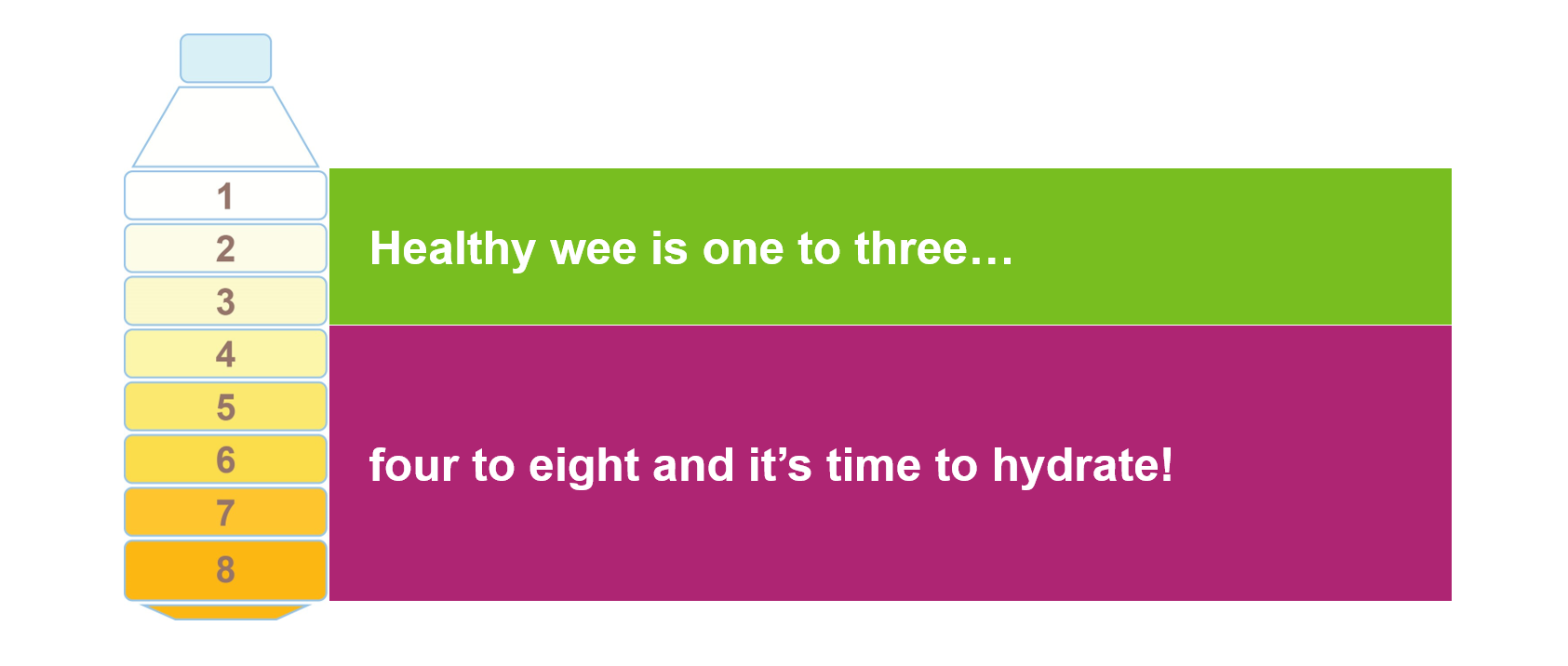Keeping hydrated during hot weather
Last edited: 16/12/2022
Fluid is essential for life, without fluids we would only survive a few days. It plays a critical role in all our body functions. We all need to replace fluid lost through breathing, sweat and flushing out waste products.
In our usual climate most people need between 1.5 and 2.5litres of fluid daily, which is equivalent to about six to eight glasses. However, extra fluid will be needed when sweating more, for example through heavy work or exercise or in hot weather.
Some people are more susceptible to becoming dehydrated in hot weather, including:
- older people – especially those over 75
- people with a serious chronic condition – particularly breathing or heart problems
- people with serious mental health problems
- people with mobility problems
- people on certain medication – check with your pharmacist or GP for details
- people who already have a high temperature from an infection.
When you do not drink adequately you can become dehydrated. This can lead to:
- tiredness
- headaches
- constipation
- nausea
- increased risk of urinary tract infections.
During a heat wave or hot weather, dehydration can also lead to heat exhaustion and heat stroke. This leaflet is designed to help you manage your fluid intake during these periods.
Top tips
- Fluid is not just about water, you can also choose other drinks you enjoy. These can include:
- tea
- coffee
- milky drinks
- fizzy drinks
- fruit juice
- squash
- fruit tea.
- Try to limit alcoholic drinks as these may promote dehydration.
- You may feel uncomfortably warm during hot weather. If this is the case, you could try having cold drinks with ice and/or a cold meal to help you feel more comfortable. If you become unwell during hot weather, try to drink any fluids you can manage and contact your GP.
- Try to have a drink at regular intervals throughout the day. If you cannot manage large amounts, try to have small sips throughout the day instead. Keep a jug of fluid close by to remind yourself to drink regularly and to keep track on how much fluid you are managing.
- Fluids found within foods can also help keep you hydrated. These can include:
- ice lollies
- jellies
- yoghurts
- milky puddings
- soups
- stews.
- Some fruits and vegetables, such as melon, tomatoes and cucumber, are also good sources of fluid.
- Don’t rely solely on thirst as a sign you need to drink. By the time you are thirsty you may already be dehydrated; be aware that the thirst mechanism is reduced in older age.
- The simplest way to know if you are drinking enough is to check the colour of your urine. If it is dark yellow you probably need to drink more but pale and straw coloured suggests you are drinking enough. If you are in doubt, check it compared to our guide below.

Contact us
Please contact the service though our Central Appointments Team:
0300 123 0861
kcht.centralisedappointmentteam@nhs.net
Monday to Friday, 9am to 3pm
This information should only be followed on the advice of a healthcare professional.
Do you have feedback about our health services?
0800 030 4550
Text 07899 903499
Monday to Friday, 8.30am to 4.30pm
kentchft.PALS@nhs.net
www.kentcht.nhs.uk/PALS
Patient Advice and Liaison Service (PALS)
Kent Community Health NHS Foundation Trust
Trinity House, 110-120 Upper Pemberton
Ashford
Kent
TN25 4AZ
![]()
Donate today, and help the NHS go above and beyond. Visit www.kentcht.nhs.uk/icare
If you need communication support or this information in another format, please ask a member of staff or contact us using the details above.
